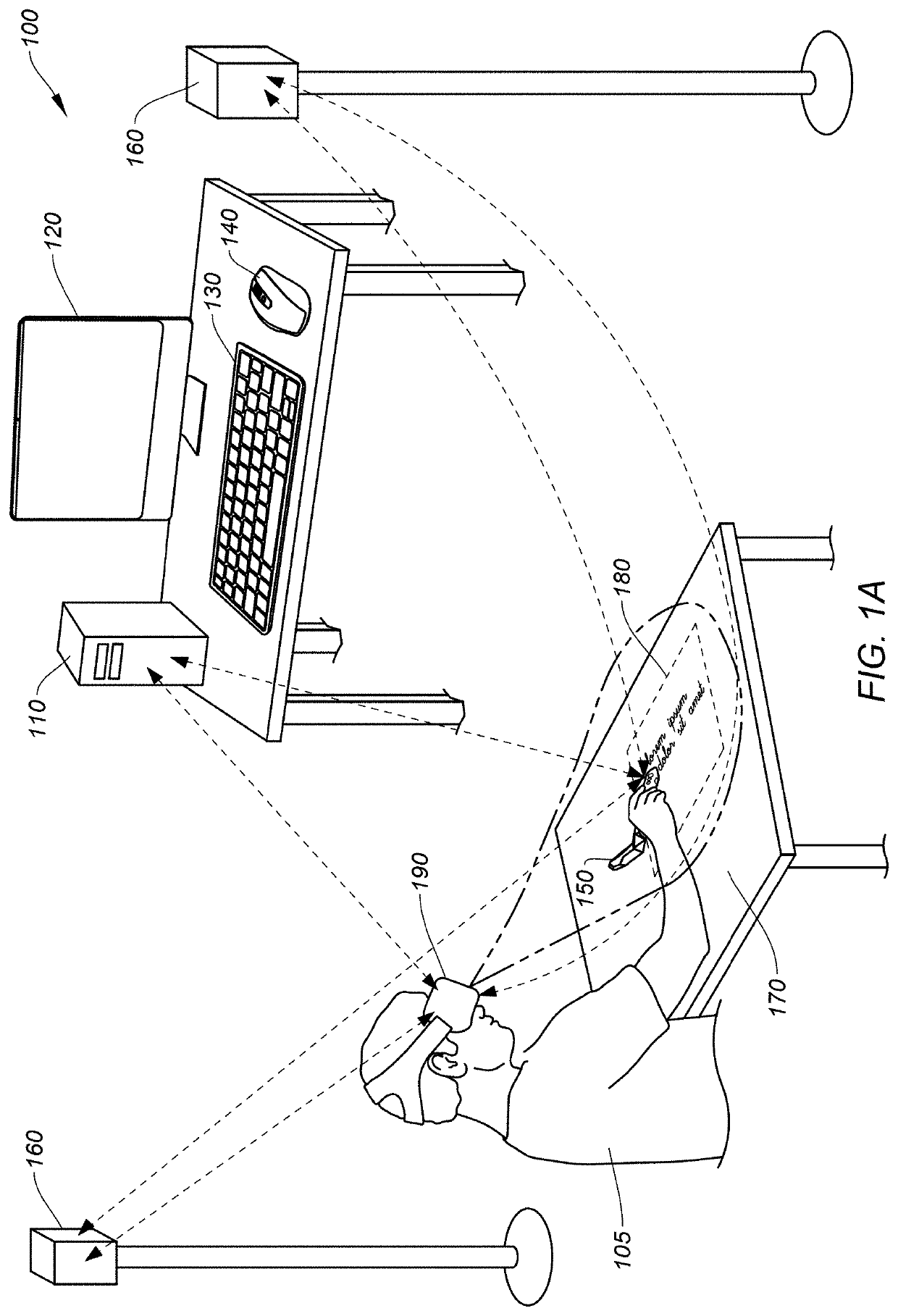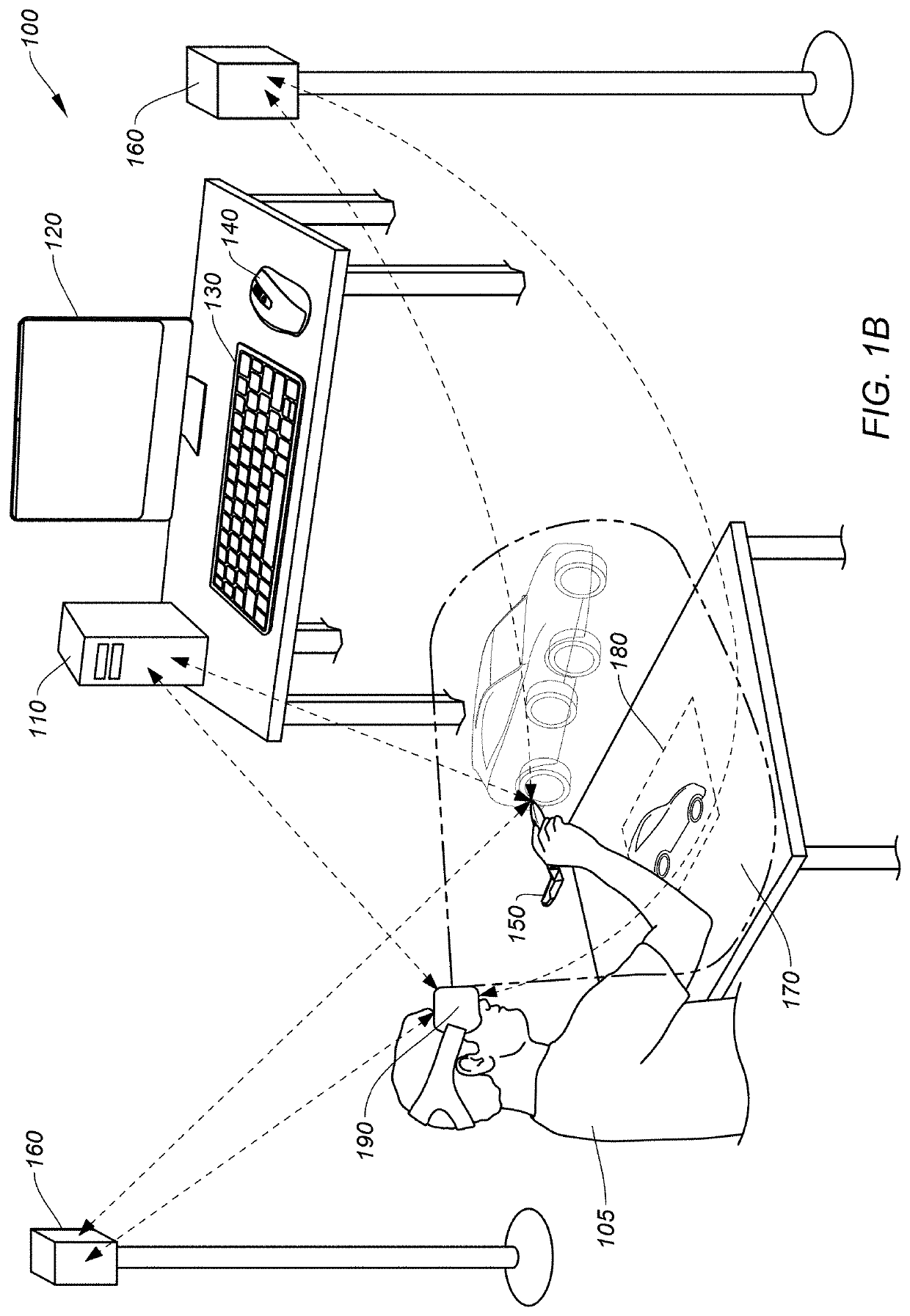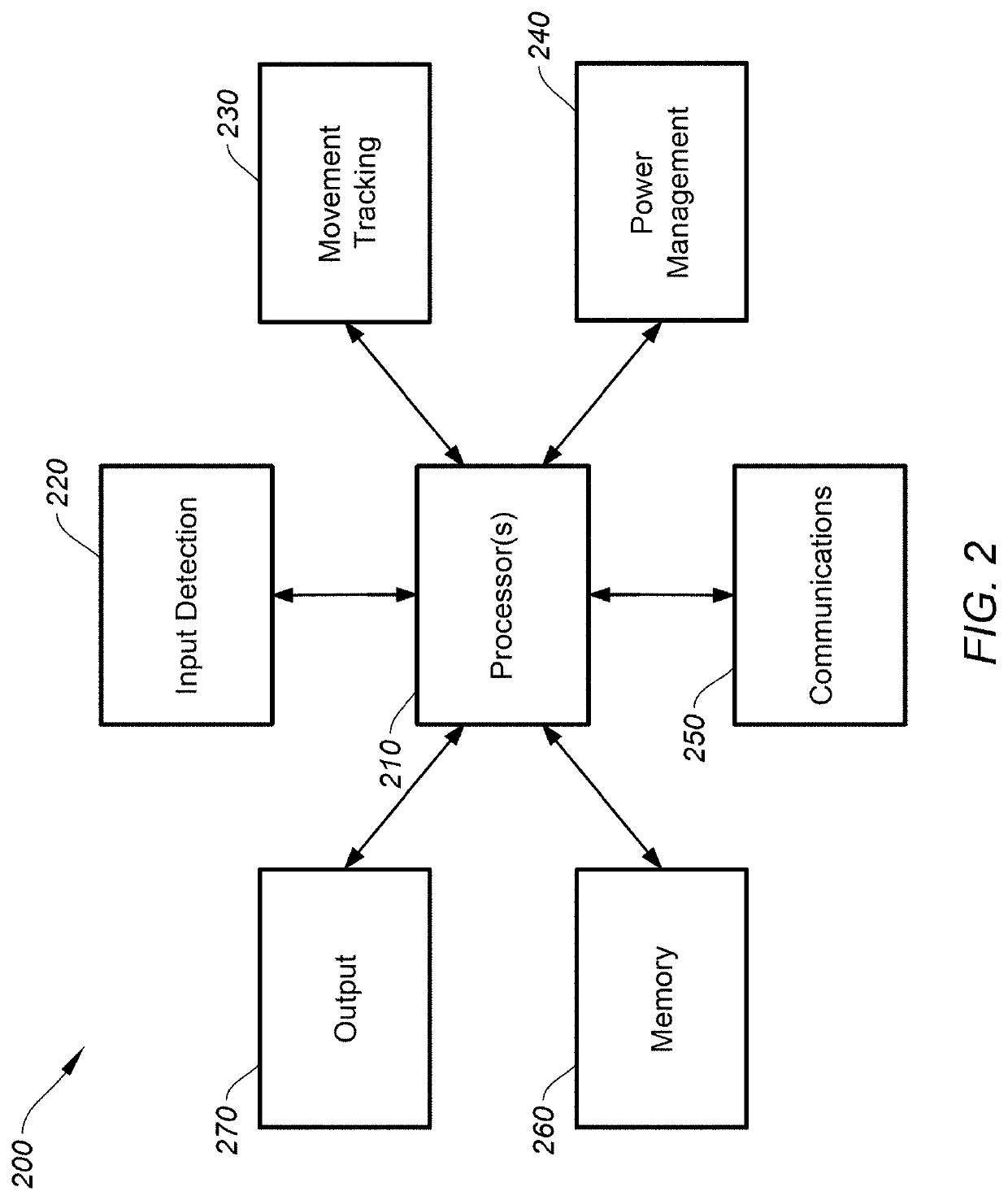Systems, devices, and methods for physical surface tracking with a stylus device in an AR/VR environment
a technology of physical surface tracking and stylus device, which is applied in the direction of electric digital data processing, instruments, computing, etc., can solve the problems of inability to accurately measure the physical surface inability to control the movement of the stylus device, etc., to achieve the effect of only allowing coarse and inarticulate movement, ungainly control, and bulky grip controllers
- Summary
- Abstract
- Description
- Claims
- Application Information
AI Technical Summary
Benefits of technology
Problems solved by technology
Method used
Image
Examples
Embodiment Construction
[0025]Embodiments of this invention are generally directed to control devices configured to operate in AR / VR-based systems. More specifically, some embodiments relate to a stylus device system configured to mitigate a tracking error of the stylus device while operating on a physical surface.
[0026]In the following description, for the purpose of explanation, numerous examples and details are set forth in order to provide an understanding of embodiments of the present invention. It will be evident, however, to one skilled in the art that certain embodiments can be practiced without some of these details, or with modifications or equivalents thereof.
[0027]To provide a high level, broad understanding of some aspects of the present disclosure, a non-limiting summary of certain embodiments are presented here. Stylus devices, as described herein, can be used as an input tool that can be used with a touchscreen-enabled device, such as tablet PCs, digital art tools, smart phones, or other de...
PUM
 Login to View More
Login to View More Abstract
Description
Claims
Application Information
 Login to View More
Login to View More - R&D
- Intellectual Property
- Life Sciences
- Materials
- Tech Scout
- Unparalleled Data Quality
- Higher Quality Content
- 60% Fewer Hallucinations
Browse by: Latest US Patents, China's latest patents, Technical Efficacy Thesaurus, Application Domain, Technology Topic, Popular Technical Reports.
© 2025 PatSnap. All rights reserved.Legal|Privacy policy|Modern Slavery Act Transparency Statement|Sitemap|About US| Contact US: help@patsnap.com



